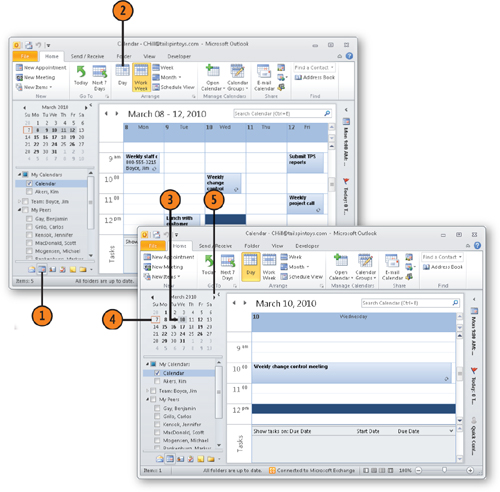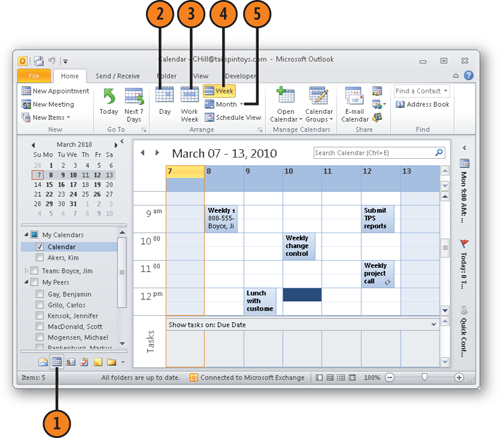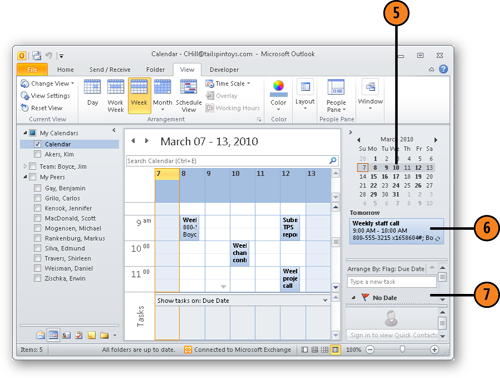You can view your Outlook calendar in several
different formats. Day view is an hour-by-hour view of your daily
schedule, whereas Month view shows your schedule for the entire month.
The Date Navigator is a small calendar with which you can navigate
quickly to a specific day, week, or month, while the To-Do Bar
consolidates all of the features of task list, Date Navigator, and
appointment list into one task pane.
1. Use the Date Navigator
Click the Calendar icon on the Navigation Pane.
Click the Day button on the Home tab.
Click a day on the Date Navigator to display it in the Calendar view.
Click to the left of a week on the Date Navigator to display that week in the Calendar view.
Click the right arrow on the Date Navigator to move to the next month.

Note:
You can access the current,
last three, and next three months by clicking the month name in the Date
Navigator. This is handy if you want to jump back a few months or jump
forward a month or two.
Note:
To see today’s date, click
the Today button in the Go To group on the Home tab. If the current
month is showing in the Date Navigator, click the boxed date to display
today’s date.
2. Use the Calendar View
Click the Calendar icon on the Navigation Pane.
Click to see an hourly breakdown of your day.
Click Work Week to see a workweek’s schedule by hour.
Click Week to see a week’s scheduling (including weekend days).
Click Month to see a month’s schedule.

Note:
You can make more room available for the Calendar pane on the screen by resizing or minimizing the Navigation Pane.
Note:
To return to today’s date, right-click inside a view and choose Today from the shortcut menu that appears.
3. Use the To-Do Bar
Click the Calendar icon on the Navigation Pane.
Click To-Do Bar, and then choose Normal.

Note:
Choose the Minimized option
from the To-Do Bar submenu to make the To-Do Bar automatically hide at
the edge of the Outlook window.
Click a date on the Date Navigator to view appointments for that date.
View upcoming appointments.
View current tasks.

Note:
Depending on the options you set for the To-Do Bar, portions of the Appointments or Tasks areas of the To-Do Bar might be blank.